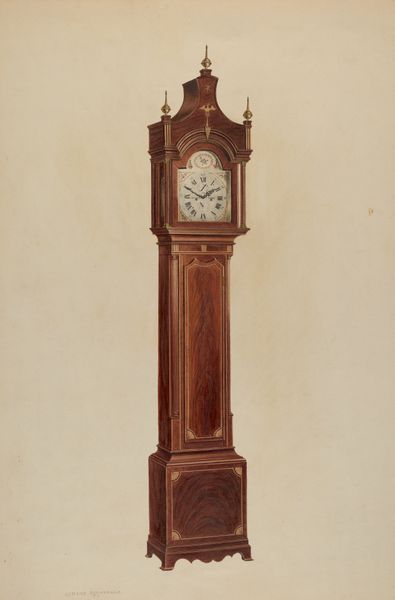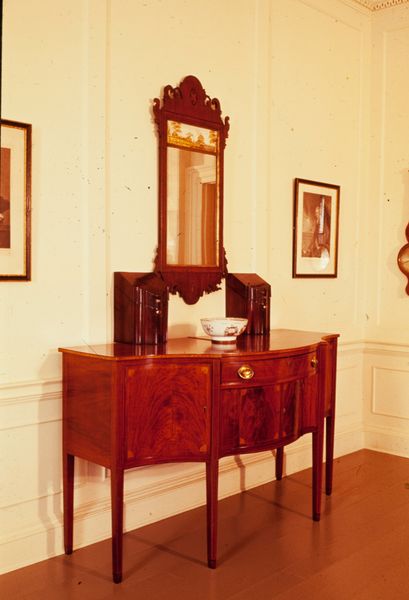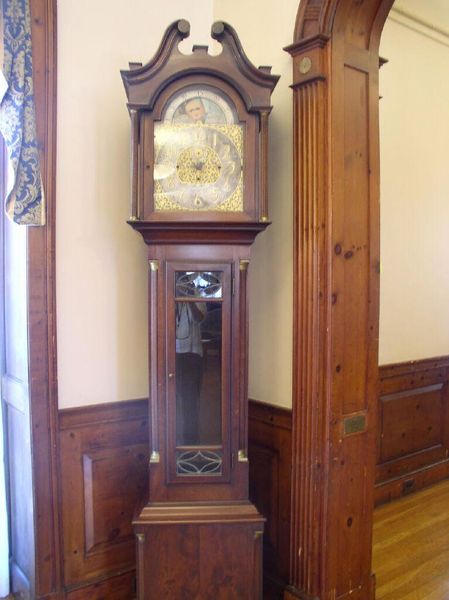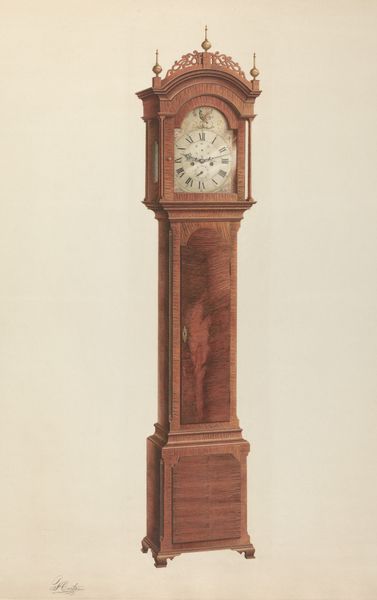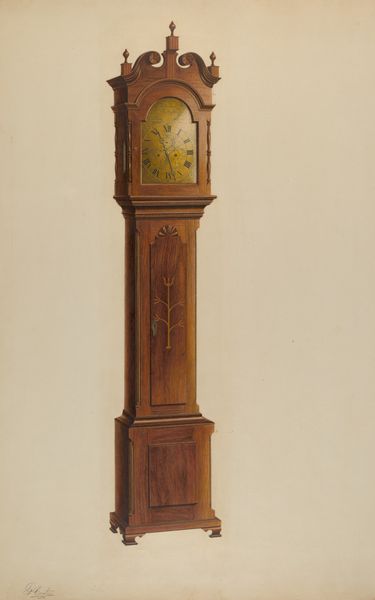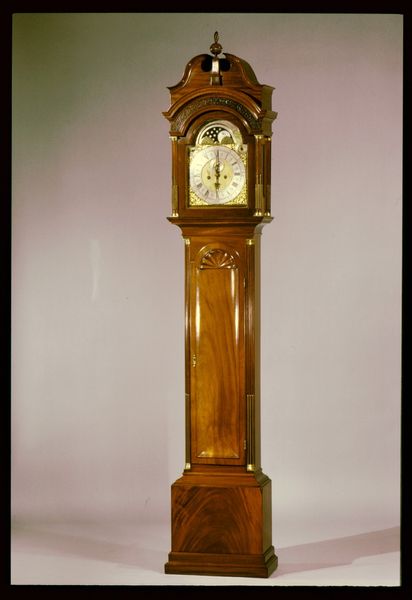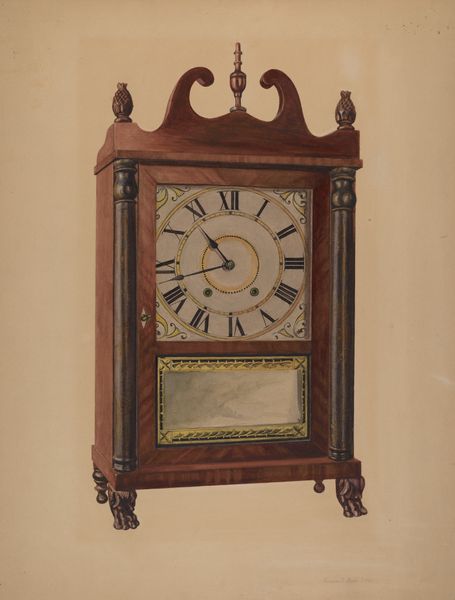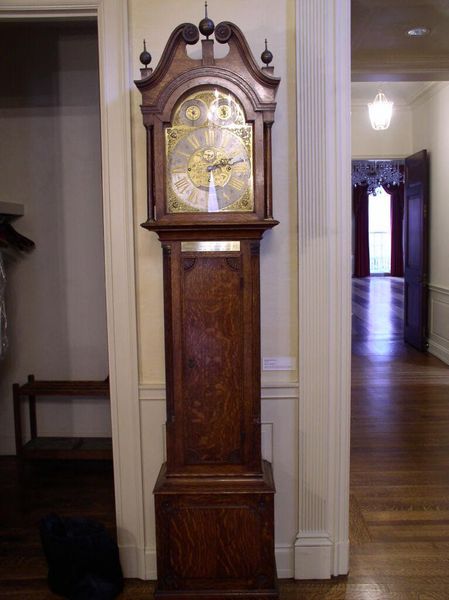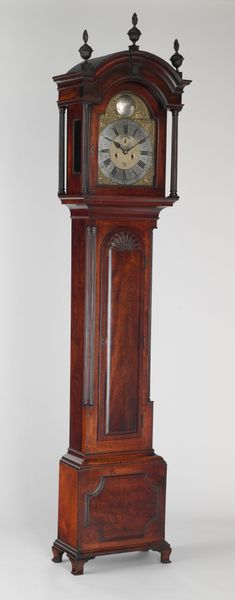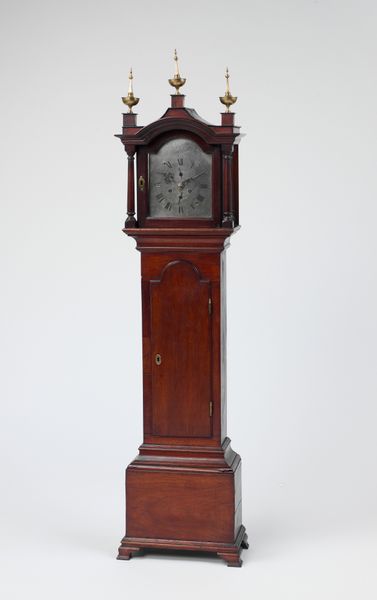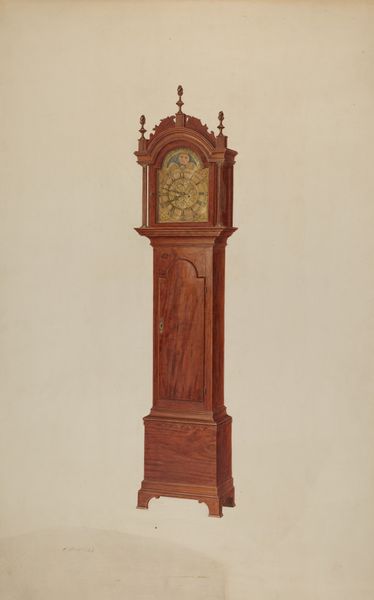
photography, wood, architecture
#
traditional architecture
#
photography
#
architecture
#
wood
#
architecture
Dimensions: 85 x 19 1/2 x 9 1/8 in. (215.9 x 49.53 x 23.18 cm)
Copyright: Public Domain
Curator: Isn’t it wonderful how time gets physically embodied? This magnificent tall case clock, crafted by John Strykes in 1773, feels like a steadfast guardian watching over centuries. It now resides at the Minneapolis Institute of Art. Editor: My first impression? Stately, imposing, yet oddly comforting. It’s that rich, dark wood, isn’t it? Gives it such gravitas. Curator: Indeed. The clock is primarily made of wood. It reflects a significant investment of labor and materials but also asserts domestic stability and refinement. Time, meticulously crafted into an object. Imagine the families whose lives it measured out, ticking away moments big and small. Editor: Time as commodity, though? The craftsmanship speaks of an elite clientele, doesn't it? It's more than just telling time; it's announcing, "We have time, and we value it enough to encase it in art!" Curator: Exactly! It also symbolizes aspiration. Clocks like these, publicly displayed, underscored a family’s commitment to social norms, structured days, and measured progress—hallmarks of burgeoning modernity. Editor: I wonder if Strykes ever imagined his creation ending up in a museum. Did he envision it still ticking away, observed by strangers centuries later? I mean, does it still work? Is that pendulum still swinging, relentlessly? It makes you ponder the role of art to sort of freeze moments in time while also reminding us of time's persistent motion. Curator: An enduring question indeed. I find myself thinking that these artifacts are meant to keep reminding people where we have been, even though things are constantly in flux. It tells a broader social story—that is why it stands proudly here in the museum today. Editor: Well, on that thoughtful note, I will take that as a timely closing remark. Curator: It seemed quite appropriate, so why not?
Comments
minneapolisinstituteofart almost 2 years ago
⋮
Inscribed on the reverse of the door to the clock's works is "Cardon Proctor, Aug. 1773, John Strykes". Both Proctor and Strykes are listed as clockmakers active in New York during the middle of the eighteenth century.
Join the conversation
Join millions of artists and users on Artera today and experience the ultimate creative platform.

